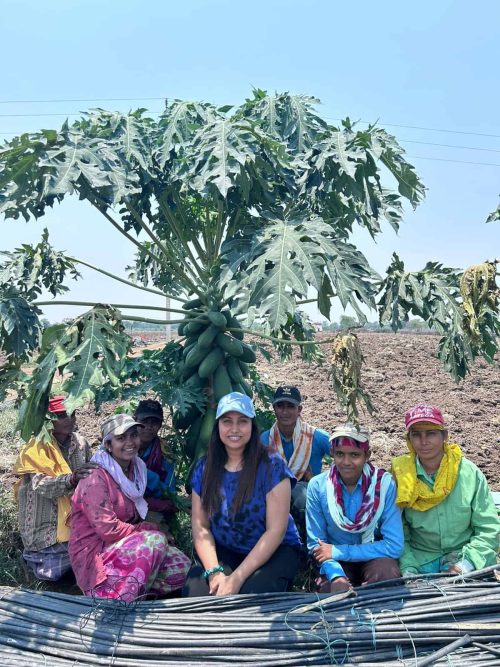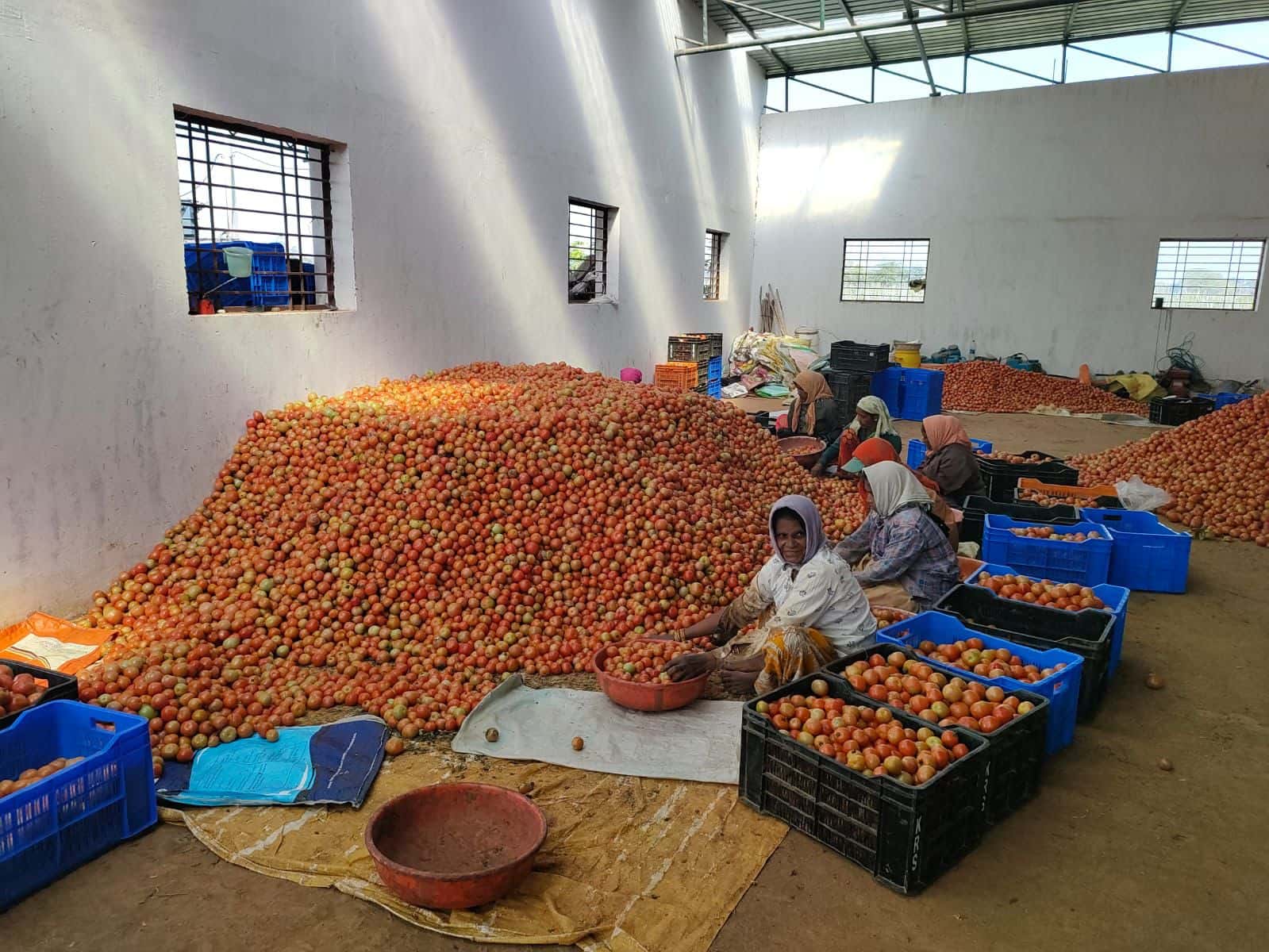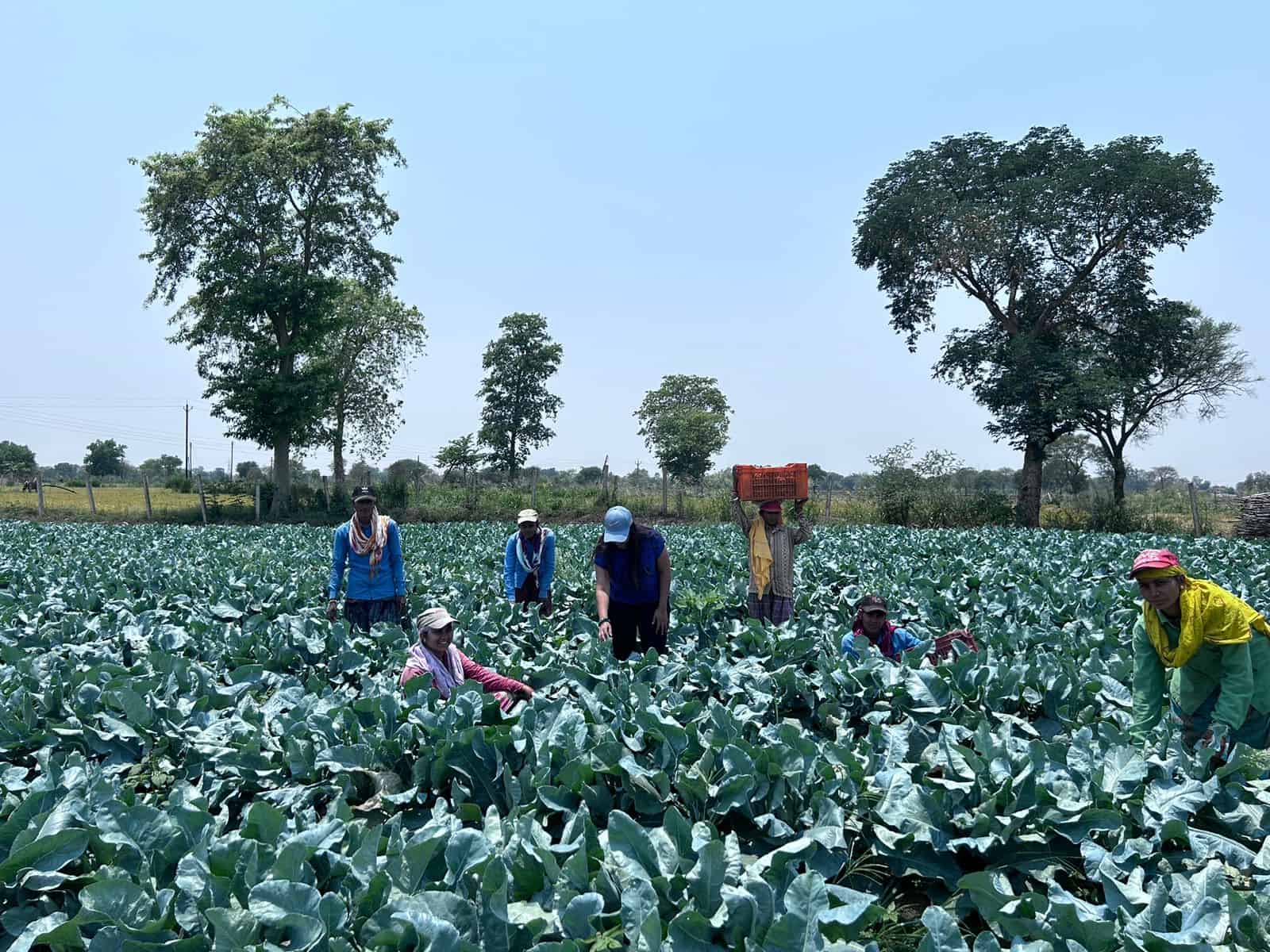How an MBA Grad Made Her Family Farm Profitable With Vegetables; Earns Rs 1.5 Cr/Year
“Who says that farming can’t be profitable? People generally have a notion that it’s small and not viable. Nothing can be farther from the truth,” says Smarika Chandrakar.
This enterprising MBA graduate grew up in a farming family in Charmudiya village in Chhattisgarh. Her childhood was spent in the lush green paddy fields with her father and grandfather, where she learnt her first lessons about life and farming. Like any other business, they had good and bad times, which the young girl was quick to adapt to.
When it came to choosing a career, she chose to pursue an engineering degree in computer science in Raipur, followed by an MBA from Pune. After working as a senior business development executive for over five years in Pune, she decided to move to Raipur to be closer to her family.
 Smarika runs Dhara Krishi Farm with her father and brother
Smarika runs Dhara Krishi Farm with her father and brother
This allowed her to spend weekends at home, which were invariably at the farm. She started learning the finer nuances of paddy farming, and their discussions at dinner turned into how they could improve productivity and the profits.
Smarika realised that vegetable farming would be more profitable than paddy, and she slowly started experimenting with the same on their land. The results were astonishing and resulted in two things: a switch to vegetable farming on over 20 acres of land and Smarika quitting her job to become a full-time farmer in 2021.
Over the past three years, she claims to have received a production of almost 50 tonnes of tomato per acre, resulting in a turnover of Rs 1.5 crore in the previous financial year.
This is why you should grow vegetables!
Traditional crops like rice and wheat have longer growth cycles, which are generally twice a year. Vegetable farming, however, gives multiple harvests as the growth cycles are shorter and are more profitable.
“Vegetable farming offers a triple win — higher income for farmers and traders, enhanced consumer health, and a rejuvenated economy. In other words, when vegetables rise, people thrive,” Dilip Rajan, the chief operating officer at the East-West Seed Global, told the Economic Times.
 Smarika has harvested tomatoes on over 13 acres.
Smarika has harvested tomatoes on over 13 acres.
Smarika realised this fact and first worked on getting the land ready for vegetable cultivation. The first vegetable she grew was a tomato, seeking help from an agricultural consultant to make the transition smooth.
Soil health, raised beds, and a game-changing harvest
“We first focused on improving the soil health by adding cow dung and vermicompost. We just left the soil free for a few months, basking in the sunlight. We installed fences and ensured that the drainage system was in place and the land was sloping,” Smarika shares with The Better India.
She also installed a drip irrigation system. After this, she prepared a raised bed for tomatoes and mulch (a layer of material applied to the surface of an area of soil to conserve soil moisture and improve fertility).
After experimenting and researching over the weekends between 2019 and 2021, Smarika took the plunge into full-time farming. With seeds purchased from a local nursery, the Chandrakar family prepared for their first tomato harvest in 2021.
 Smarika plans to expand the area under vegetable cultivation
Smarika plans to expand the area under vegetable cultivation
“We received a great harvest of almost 50 tonnes per acre in the first year. We sold it in local mandis (marts) and in other cities like Visakhapatnam, Patna, Kolkata, New Delhi, Bengaluru and more. I have tied up with brokers with whom I pre-decide the rates,” she adds.
Besides tomatoes, she also grows bottle gourd, cucumber and brinjal. The sowing and harvesting season is between May to March, with the cycle roughly around three months, she shares.
“While we would only be able to harvest paddy twice a year, we are able to harvest vegetables many more times. It’s also much more profitable,” she adds.
In the same Economic Times article, Dilip Rajan shared, “For instance, a thousand square metres of land planted with bitter gourd will give a farmer roughly the same income as one hectare planted for rice. Vegetables can be harvested quickly (45-55 days), and three to four crops can be cultivated throughout the year to meet the increased demand for vegetables and changes in food consumption.”
Farming is a viable career
Over the past three years, Smarika has been cultivating a variety of vegetables on her land. She now plans to add 15 acres more this year to her existing 20. “Last year, we received a harvest of 55 tonnes per acre for tomatoes. With this, our turnover was over Rs 1.5 crore in FY 23-24,” she adds.
 How to start vegetable farming?
How to start vegetable farming?
Smarika runs the farm along with her brother and father. Employing over 125 people on the farm, she hopes to use better technology going ahead.
“Currently, we are doing a lot of things manually, like fertigation (supplying dissolved fertilisers to crops through an irrigation system). I want to add more technology to improve productivity,” she adds.
Images Courtesy Smarika Chandrakar
News